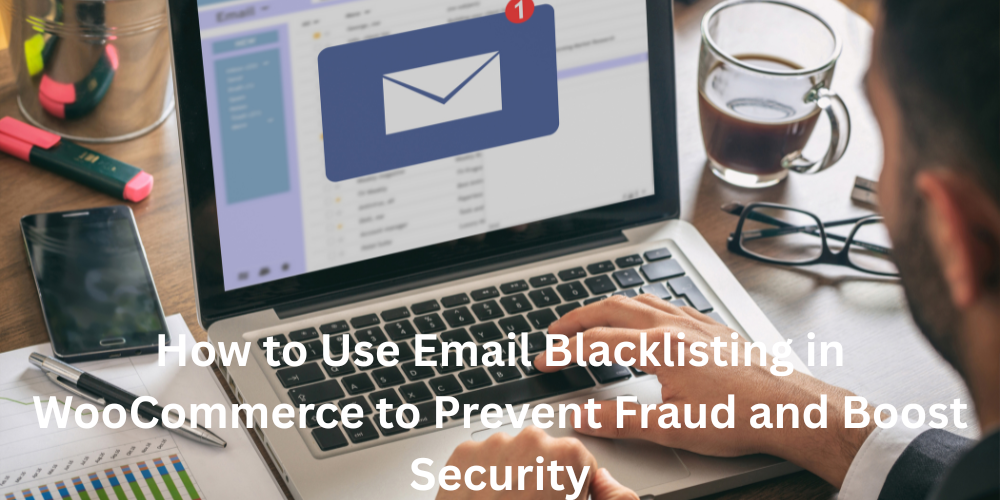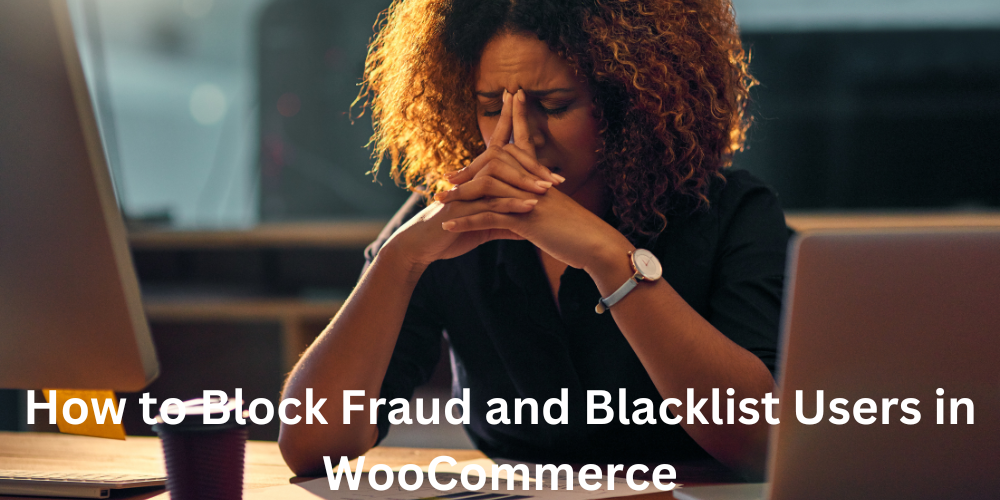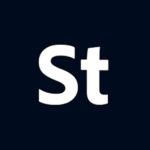The Noun Project is a platform that aggregates and catalogs millions of icons and photos, enabling users to enhance their visual communication and design projects. It serves as a global visual language, offering tools for individuals and businesses to simplify complex ideas through symbols.
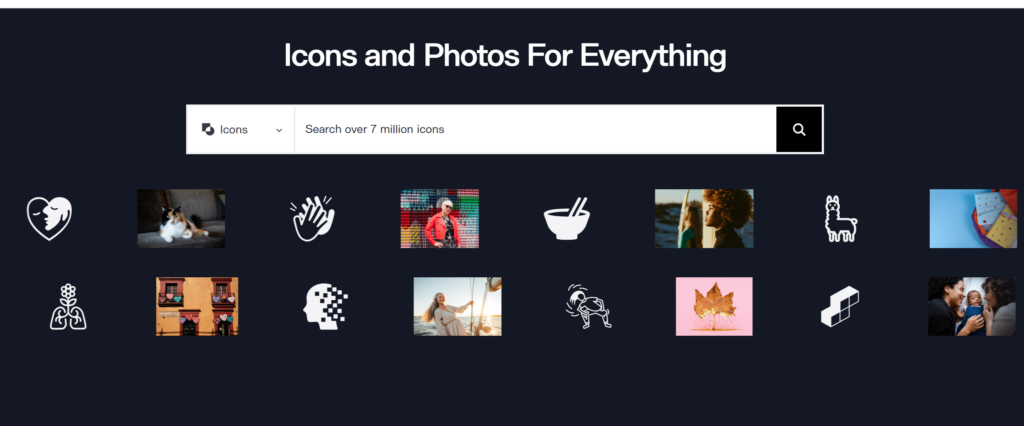
- Founded: December 2010 by Sofya Polyakov, Edward Boatman, and Scott Thomas.
- Purpose: To create a universal visual language that bridges communication gaps.
- Content: Over 5 million icons and photos, contributed by graphic designers worldwide.
- License Options: Creative Commons (free with attribution) or royalty-free (paid).
Initially launched as a Kickstarter campaign, The Noun Project has evolved into a comprehensive resource for educators, designers, businesses, and individuals seeking high-quality icons for presentations, websites, infographics, and more.
Key Features
- Extensive Icon Library:
- Over 5 million icons covering diverse themes like education, technology, nature, and more.
- Icons are categorized for easy navigation and tailored to various industries.
- Customization Tools:
- Users can adjust icon colors, scale sizes, and modify elements to align with branding needs.
- Premium accounts allow unlimited royalty-free usage without attribution.
- Ease of Use:
- Intuitive interface for searching and downloading icons quickly.
- Integration with design software like Adobe Creative Suite.
- Global Collaboration:
- Contributions from designers worldwide ensure diversity in styles and themes.
- Iconathons hosted by The Noun Project encourage collaborative creation of symbols for social issues.
- Educational Add-ons:
- Tools like Google Slides add-ons provide quick access to commonly used icons for educators.
- Subscription Plans:
- Paid plans (IconPro) offer unlimited access to royalty-free icons, SVG/PNG downloads, and customization features.
Benefits
- Simplifies Communication:
- Icons help convey ideas visually, making complex concepts easier to understand.
- Ideal for presentations, infographics, marketing materials, and educational content.
- Supports Branding:
- Customizable icons ensure consistency with brand identity across digital and print formats.
- Empowers Creators:
- Artists earn royalties when their icons are purchased.
- Global visibility for contributors through the platform’s widespread use.
- Versatility Across Formats:
- Icons can be used in digital media (websites, apps) and print materials (brochures, flyers).
- Affordable Access:
- Free options available with attribution; paid plans remove attribution requirements for commercial use.
How does The Noun Project ensure the quality and consistency of its icons?
The Noun Project ensures the quality and consistency of its icons through a rigorous content moderation process, strict technical guidelines, and a focus on design clarity and cohesion. Here’s how they achieve this:

1. Rigorous Content Moderation
- Every icon submitted to The Noun Project undergoes a thorough review by moderators to ensure it meets high-quality standards.
- Moderation evaluates factors such as subject matter relevance, design quality, and the accuracy of accompanying tags.
2. Strict Technical Guidelines
To maintain professional standards, The Noun Project requires contributors to follow specific technical requirements, including:
- Artboard Size: Icons must be created on a 100px by 100px artboard in Adobe Illustrator.
- True Black Color: Icons must use a true black color (#000000) to ensure consistency across designs.
- No Strokes: Strokes must be converted to compound paths for scalability and predictability.
- Centered Design: Icons must be centered with a 2–5px buffer to prevent clipping.
- SVG Format: Icons must be submitted in SVG format for seamless integration and scalability.
These guidelines ensure that icons are clean, functional, and optimized for end-users.
3. Consistency Across Icon Sets
- Icon sets are evaluated for visual harmony, requiring consistent stroke weights, corner radii, and design elements like shadows or patterns.
- Maintaining a unified style ensures that icon sets look polished and professional when used together.
4. Focus on Clarity
- Icons are designed to be clear and concise, effectively communicating complex concepts at a glance. This focus on simplicity enhances usability across various applications like presentations, websites, and educational materials.
5. Feedback for Contributors
- If an icon is denied, contributors receive feedback explaining the reasons (e.g., technical errors or design inconsistencies). This helps designers improve their submissions for future approval.
By combining strict guidelines, thorough moderation, and an emphasis on clarity and cohesion, The Noun Project maintains a high standard of quality for its extensive icon library. This ensures users can rely on the platform for professional-grade visuals that meet diverse needs. for other more to sell design Podia.
What are some real-world examples of businesses successfully using The Noun Project?
Here are some real-world examples of businesses successfully using The Noun Project:
1. Enhancing Educational Materials
- Educators use The Noun Project to create engaging teaching aids and presentations. For instance:
- A biology teacher can incorporate icons to represent species or scientific concepts, simplifying complex topics for students.
- This approach improves student engagement, comprehension, and retention of information.
2. Branding for Startups
- Startups leverage The Noun Project’s affordable and diverse icon library to establish strong brand identities.
- Example: A tech startup uses icons to visually represent innovation and connectivity in promotional materials.
- This helps startups create a professional brand presence that resonates with their target audience, driving recognition and growth.
3. Streamlining Corporate Communications
- Multinational companies use The Noun Project to maintain visual consistency across internal and external communications.
- Example: A global corporation standardizes presentations, reports, and documents using the platform’s icons.
- This ensures unified branding across offices and departments, facilitating effective communication.
4. Integration with Design Tools
- Companies like Squarespace use The Noun Project’s API to enhance their offerings:
- Squarespace integrated the icon library into its DIY logo builder, enabling users to create custom logos effortlessly.
- This partnership has boosted Squarespace’s appeal to small businesses looking for accessible branding tools.
5. Collaboration Tools
- Platforms like Mural use The Noun Project’s API to improve team collaboration:
- Mural provides access to millions of icons, allowing teams to visualize ideas in real-time during meetings or sprints.
- This integration fosters creativity and productivity by enabling faster understanding of complex concepts.
6. Partnerships with Leading Brands
- Companies like Adobe, Typeform, and others have integrated The Noun Project’s Icon API into their digital products:
- These integrations enhance user experiences by providing visually appealing icons that simplify communication and boost creativity.
What challenges did The Noun Project face before finding its current business model?
The Noun Project faced several challenges before refining its current business model, transitioning from an open-source initiative to a profitable platform. Here are the key hurdles and how they were addressed:
Challenges Faced
- Initial Funding and Monetization:
- The Noun Project started as a Kickstarter campaign in 2010, aiming to create a free, open-source library of symbols.
- Monetizing the platform while maintaining accessibility was a significant challenge, as the founders wanted to balance free access with sustainable revenue generation.
- Building a Scalable Library:
- Early efforts focused on creating a diverse and high-quality icon library. Ensuring consistent quality across contributions from global creators was complex.
- Moderation and technical guidelines had to be implemented to maintain standards and scalability.
- Attracting Contributors:
- Convincing designers to contribute icons for free or under Creative Commons licensing posed difficulties, especially when the platform was not yet profitable.
- Expanding Beyond Icons:
- While icons were the core offering, demand for more visual assets like stock photography emerged. In 2020, The Noun Project expanded to include photography collections that champion diversity and inclusion.
- Competing in a Crowded Market:
- Competing with established design resource platforms required differentiation through features like API integration and licensing flexibility
The Noun Project Partnered or Affilated Program
The Noun Project offers a structured Affiliate Program that allows individuals and businesses to earn commissions by promoting its services. Here are the details
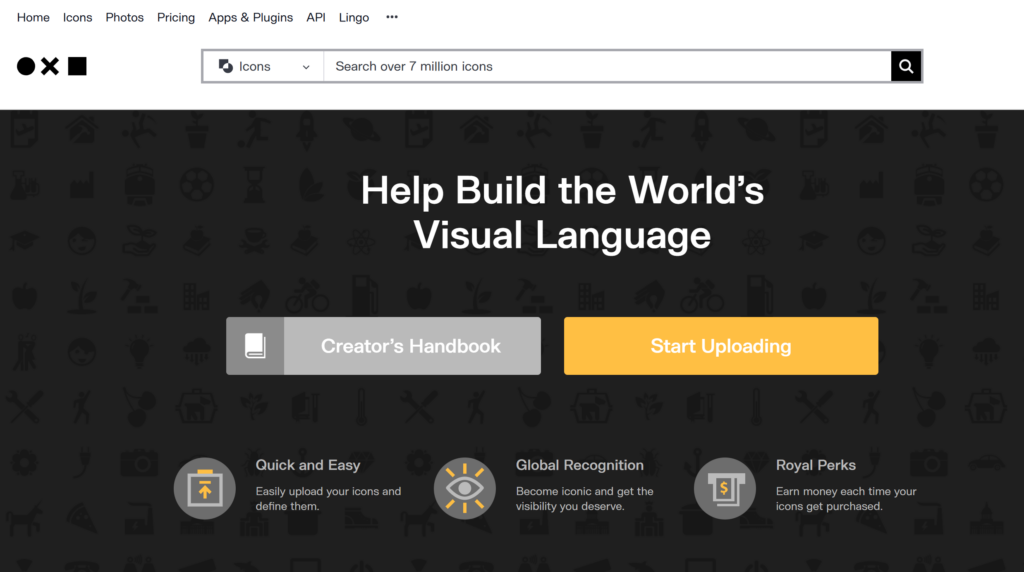
- Commission Rates:
- Earn 25% on annual subscriptions (NounPro, Team, Edu).
- Earn 50% on monthly subscriptions.
- Earn 80% on API subscriptions.
- Benefits:
- High earning potential with competitive rates.
- Access to promotional materials and tracking tools.
- Free to join and easy to participate globally.
- How to Join:
- Sign up through Commission Junction (CJ Affiliate) and start promoting.
